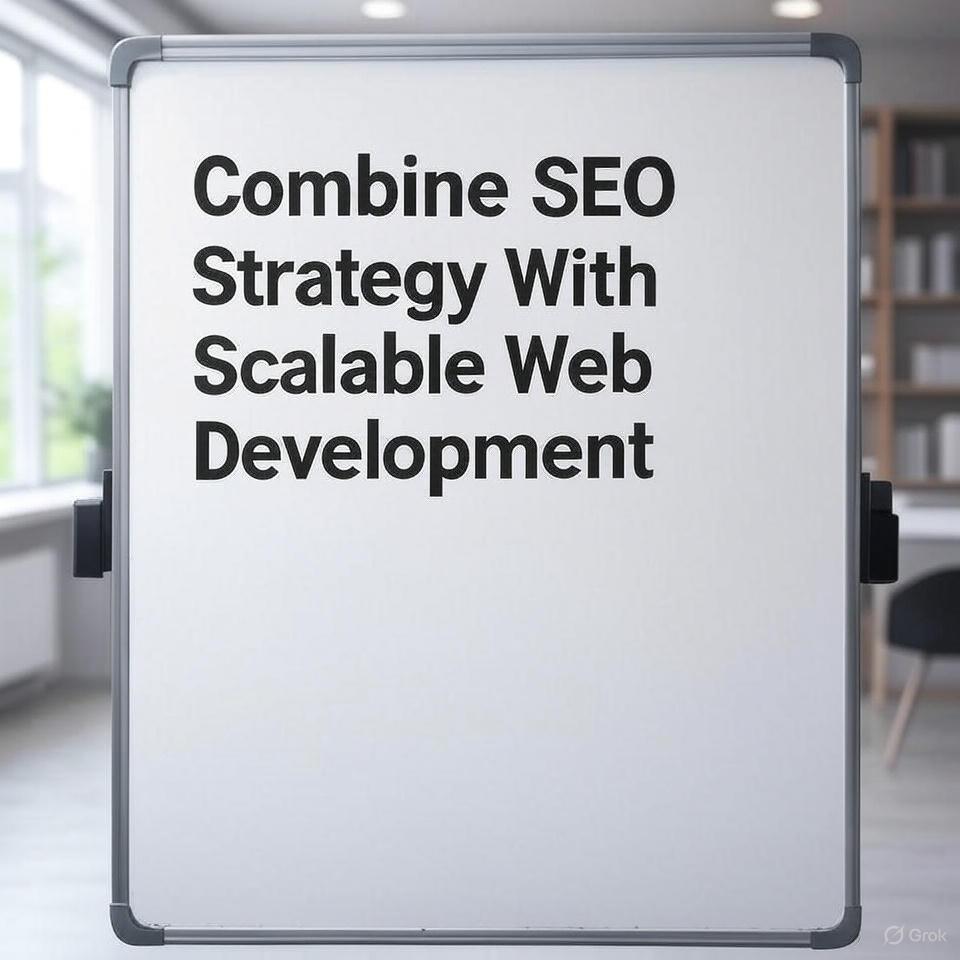How can you grow a website without getting bogged down in SEO debt? This is the issue that more and more digital leaders are becoming aware of. It’s no longer enough for development teams to focus on clean code while SEO specialists resolve visibility issues afterwards. If your website isn’t designed to rank and adapt from the outset, you’re wasting time and resources on retrofitting mistakes.
The problem is that technical performance and search visibility have become deeply intertwined. Yet many businesses still treat them as separate workflows. The result? Either sites are fast but invisible, or pages are keyword-stuffed and buckle under the weight of outdated infrastructure. Neither option is scalable. Neither wins.
Smart agencies are changing the game. They aren’t just deploying development talent and SEO playbooks in parallel; they’re designing systems where metadata informs architecture and page speed and crawlability are fundamental, not an afterthought. They treat SEO strategy as part of product thinking, not just a way to increase traffic. They’re also building modular, headless and content-first frameworks that grow with demand without losing ranking power.
In the sections ahead, you’ll see up close how top agencies are bridging the gap between strategy and execution without compromising either. If you’ve ever wondered how to avoid the growing disconnect between technical builds and marketing goals, read on.
Building a Strong SEO Foundation Into Scalable Architecture
Technical SEO as a Design Input, Not an Afterthought
You can’t retrofit a site for SEO and expect strong results. The indexability and crawl logic of a site should influence your wireframes as much as the brand colours and font choices. This means mapping the content hierarchy before development even touches the repository. No orphaned pages. No bloated navigation. No wasted crawl budget.
Every technical decision, from URL slugs to heading tag hierarchy, impacts how search engines read your site. Clean, semantic markup and consistent canonicalisation are not just backend tasks; they influence how authority flows through your domain. Schema markup? It’s not just for blog posts. It’s incorporated into product pages, service descriptions and team bios, wherever context needs a boost.
Forward-thinking agencies build technical SEO directly into development sprints. Metadata isn’t just a formality that gets passed along; it’s structured collaboratively. Engineers and SEO experts will debate slashes in URLs or pagination logic long before anything goes live. This approach is efficient and avoids the need for months of clean-up work later on.
Scalable CMS and Frameworks with SEO Flexibility
A fast website that cannot support SEO efforts is like a sports car with no boot: fun for a while, but ultimately useless. That’s why the shift to headless CMS and Jamstack architecture is about more than just performance. It’s about flexibility. You need to create content blocks that won’t break when your SEO team wants to launch a new campaign six months from now.
Modular design systems allow you to add new content types, tag structures, and internal link components without reinventing the wheel each time. Imagine how much time you could save by building a comparison or SEO landing page in hours instead of weeks without sacrificing design consistency or load time. Agencies are developing component libraries with SEO use cases in mind, not just visual flair.
When hire remote AI developers or scaling engineering teams, modern frameworks such as Next.js and Astro facilitate the maintenance of consistent SEO standards across global teams. Reusable components, server-side rendering and tight performance budgets create a technical foundation that ranks well and lasts.
Automation Without Sacrificing SEO Control
Scaling up your content doesn’t have to mean sacrificing precision. One of the biggest mistakes fast-growing sites make is handing over the generation of metadata entirely to automation, only to find that every title tag ends up reading like a spreadsheet column. Automation is intended to enhance SEO processes, not replace valuable judgment.
Smart systems have templates for titles, descriptions, and Open Graph tags, but users can override these at any time. For example, you could programmatically create 1,000 product titles and still create the 30 most profitable ones manually. This is what distinguishes mass production from bespoke tailoring.
The same approach should be taken with internal linking. Contextual links can be automated depending on taxonomy or search trends, but this should be at the discretion of your SEO team. The most effective agencies create dashboards that allow editors to edit anchor text or establish priority URLs independently of developers.
This hybrid approach fast yet editable, is where SEO and development stop working in isolation. This enables you to build for scale without losing nuance. It’s also where technical SEOs and product engineers truly start to speak the same language.
When your backend, frontend, and search visibility all work from the same blueprint, growth doesn’t have to come with technical debt.
Collaboration Between SEO Strategists and Dev Teams
Agile SEO Integration in Development Workflows
Search visibility is not something that should be added after launch. Best agencies consider SEO a product feature, and they incorporate it into sprints. Each version will have SEO checklists, redirect mapping, new schema, new headers and meta rewrites. This is as normal as committing new code or checking designs. Rather than waiting for a quarterly audit, SEO specialists participate in sprint planning. They don’t just flag problems — they’re part of the build process. While a web application testing company might check functionality during QA, your SEO expert is verifying crawlability, structured data accuracy and the expected behaviour of robots.txt.
This kind of integrated approach prevents common errors, such as developers accidentally removing critical links or creating thin pages. It also means that technical SEO improvements don’t become bottlenecks. They’re continuous, not occasional.
Data-Driven Decisions From Shared Analytics
You can’t improve what you don’t measure, and using analytics in isolation leads to fragmented decision-making. High-performing agencies create shared dashboards that combine SEO metrics and behavioural data. Click-through rates sit alongside heatmaps. Bounce rates are paired with scroll depth.
But why does this matter? Because ranking #1 for a keyword means nothing if users land on your page and immediately leave. The same applies if your page technically ranks well, but users can’t find the CTA. Teams need to interpret SEO signals and UX behaviour together. This allows you to identify misaligned headlines, confusing layouts and content that drives clicks but not conversions.
Cross-functional reviews are key here. Content leads, developers, SEO experts and designers all look at the same numbers, so instead of pointing the finger, there is shared accountability. If organic traffic decreases after a redesign, you will know exactly which metrics to check and which variables to test.
If you’re working with a web application testing company, their QA process shouldn’t just check for broken buttons; it should also verify that key SEO elements (such as canonical tags or hreflang) are still functioning properly after every deployment.
Future-Proofing Through Continuous Optimization
Agencies that succeed in the long term don’t just build websites — they develop frameworks for sustained relevance. Every project is designed to allow for growth, with features such as expandable URL structures, component systems that can accommodate new content types and flexible taxonomies.
This is important when business priorities change or when you launch in a new region or sector. You don’t want to change your platform every time your blog strategy changes or product categories multiply. You need to be able to add new content and features without compromising your SEO.
Maintaining living SEO playbooks is part of this future-proofing. These are not static PDFs that get ignored, but rather evolving documents tied to actual builds. These include rules for internal linking, image naming conventions, crawl budgets and fallback strategies for when algorithms change. Because they will change.
The best teams conduct SEO retrospectives after launching a website, evaluating not only what was provided but also how it worked. Did new category pages attract the right kind of traffic? Did faster pages lead to higher rankings? It’s an ongoing process of speculation, construction, testing and improvement.
That’s the key. SEO and development aren’t separate processes; they’re integrated. When you build with flexibility, test with data and continuously optimise, your website becomes so much more than just a digital storefront. It becomes a growth system.
Conclusion
What stands out most when you look at how top agencies operate? They don’t treat SEO and development as separate departments exchanging requests. Instead, they treat them as one fluid system, designing, building and optimising iteratively. SEO isn’t just a finishing touch; it’s integral to the process.
This mindset pays off. Sites built with this integrated approach are easier to scale up, quicker to adapt to changes and harder for competitors to outrank. Every development decision improves search visibility. All SEO optimisation takes performance into account. The focus is not on traffic or technology, but on creating digital infrastructure that can accommodate your growing business.
The point is that: By now, you should no longer think of SEO as an afterthought or a checklist item. It’s time to change your approach. The goal is not only to rank, but also to be resilient. Begin matching your strategy to your development process — that’s where long-term ROI comes from.






